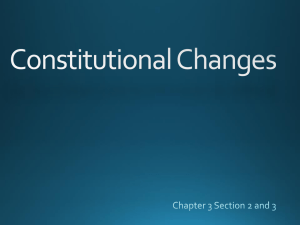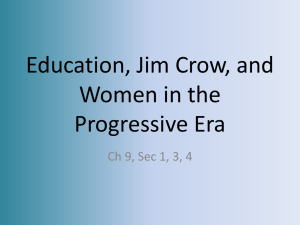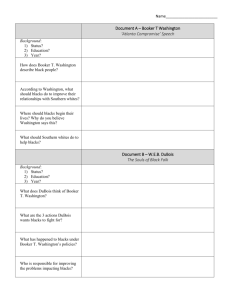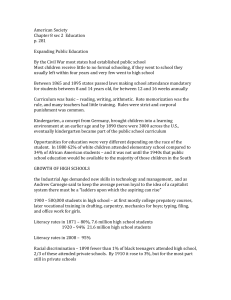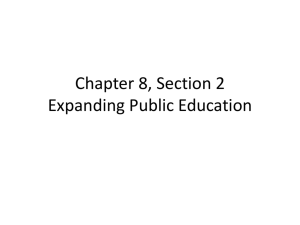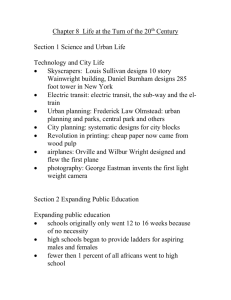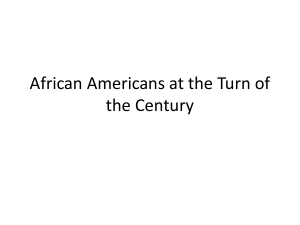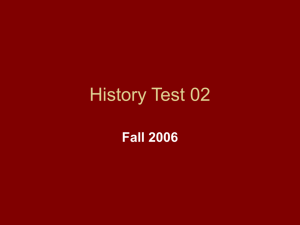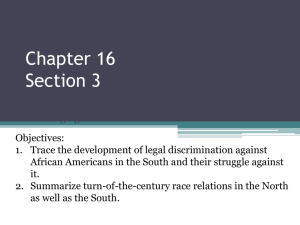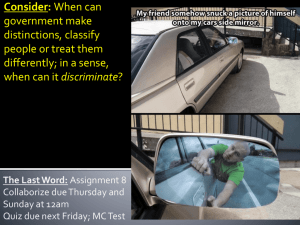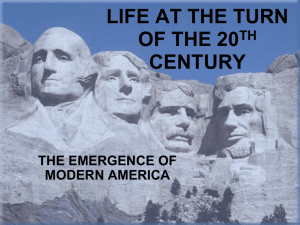Chapter 9, Section 2: Women in Public Life Women in the Workplace
advertisement
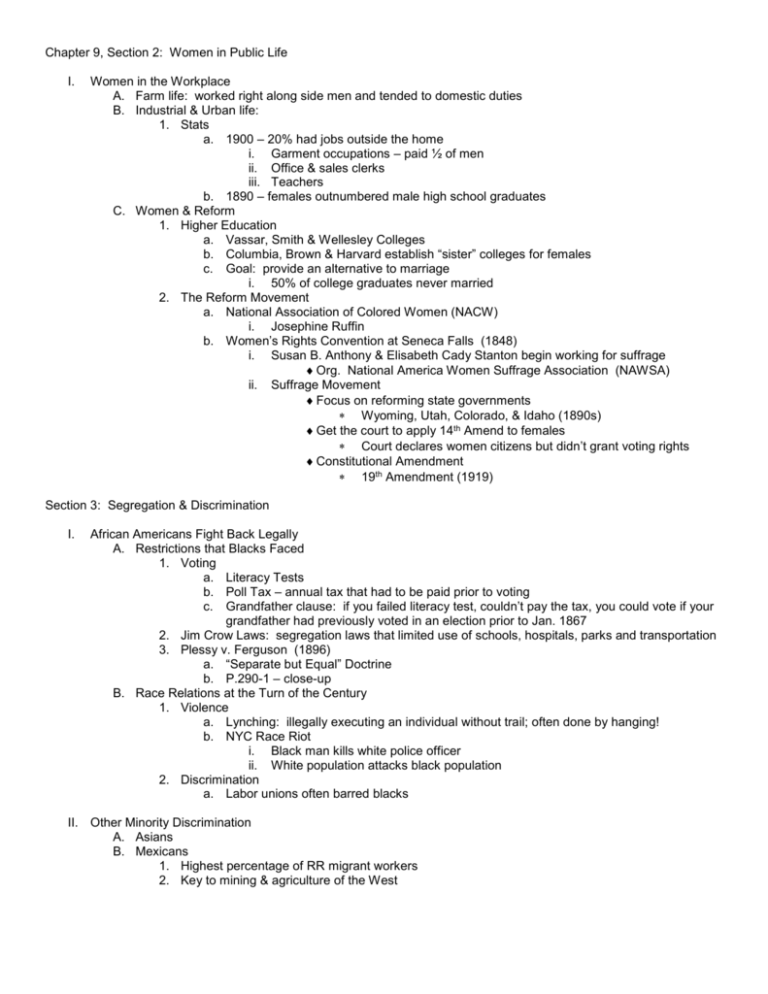
Chapter 9, Section 2: Women in Public Life I. Women in the Workplace A. Farm life: worked right along side men and tended to domestic duties B. Industrial & Urban life: 1. Stats a. 1900 – 20% had jobs outside the home i. Garment occupations – paid ½ of men ii. Office & sales clerks iii. Teachers b. 1890 – females outnumbered male high school graduates C. Women & Reform 1. Higher Education a. Vassar, Smith & Wellesley Colleges b. Columbia, Brown & Harvard establish “sister” colleges for females c. Goal: provide an alternative to marriage i. 50% of college graduates never married 2. The Reform Movement a. National Association of Colored Women (NACW) i. Josephine Ruffin b. Women’s Rights Convention at Seneca Falls (1848) i. Susan B. Anthony & Elisabeth Cady Stanton begin working for suffrage Org. National America Women Suffrage Association (NAWSA) ii. Suffrage Movement Focus on reforming state governments Wyoming, Utah, Colorado, & Idaho (1890s) Get the court to apply 14th Amend to females Court declares women citizens but didn’t grant voting rights Constitutional Amendment 19th Amendment (1919) Section 3: Segregation & Discrimination I. African Americans Fight Back Legally A. Restrictions that Blacks Faced 1. Voting a. Literacy Tests b. Poll Tax – annual tax that had to be paid prior to voting c. Grandfather clause: if you failed literacy test, couldn’t pay the tax, you could vote if your grandfather had previously voted in an election prior to Jan. 1867 2. Jim Crow Laws: segregation laws that limited use of schools, hospitals, parks and transportation 3. Plessy v. Ferguson (1896) a. “Separate but Equal” Doctrine b. P.290-1 – close-up B. Race Relations at the Turn of the Century 1. Violence a. Lynching: illegally executing an individual without trail; often done by hanging! b. NYC Race Riot i. Black man kills white police officer ii. White population attacks black population 2. Discrimination a. Labor unions often barred blacks II. Other Minority Discrimination A. Asians B. Mexicans 1. Highest percentage of RR migrant workers 2. Key to mining & agriculture of the West Chapter 8, Section 2: Expanding Public Education I. Public Education in America A. William Torrey Harris: public education was the instrument to lift all classes of people into civilied life. 1. US Commissioner of education a. Purpose of school: training for employment and citizenship b. Gateway to greater security & social status c. Assimilaiton of immigrants d. Stablize democratic society 2. Promotes Horace Mann & John Dewey B. The Law 1. 1865-95 a. Children 8-14 must attend for 12-16 weeks b. Curriculum: Reading, Writing & Arithmetic c. Corporal Punishment was common practice d. Kindegarten develops as childcare, added to public school e. Stats: 60% of whites attended; 35% of Af. Am. attended C. High Schools Develop 1. Industrialism demanded technologically savvy and management 2. Expanded curriculum: science, civics, social studies, vocational ed (drafting, carpentry, mechanics & clerical skills) D. Minorities 1. Less than 1% of Af. Am. attended high schools (1890) 2. Assimilation for European immigrants a. Catholics develop their own parochial schools b. Adults attend to obtain citizenship E. Higher Education 1. 2% attending college in 1900 2. Research Universities develop a. Curriculum: foreign languages, physical sciences, psychology & sociology 3. Professional Colleges a. Curriculum: law & medicine 4. Minorities a. Freedman’s Bureau opens “all-Black” institutions i. Howard, Atlanta & Fisk b. Booker T. Washington i. Racism would end when blacks acquired skills and proved their economic value ii. Opens Tuskegee Institute (1881) iii. Aims to provide useful skills in agriculture, domestic & mechanical work c. WEB DuBois i. Received his degree from Harvard (1895) ii. Disagrees with Booker T. Washington iii. Starts the Niagara Movement – blacks should obtain Liberal Arts Ed. And compete for leadership jobs iv. Inclusion rather than
